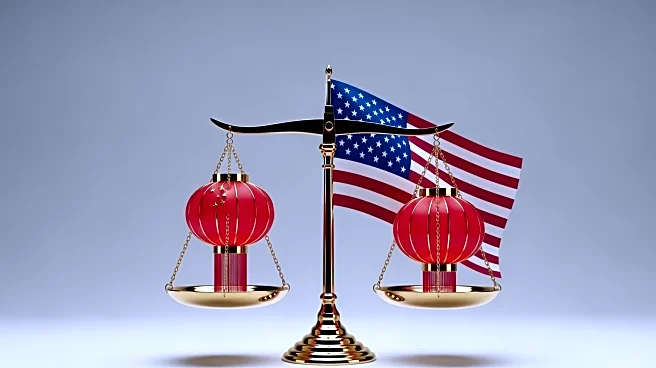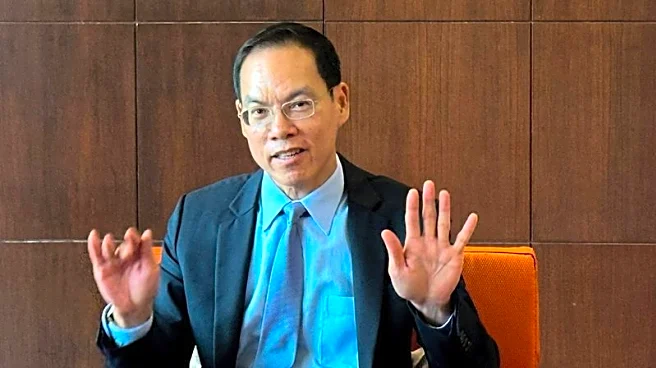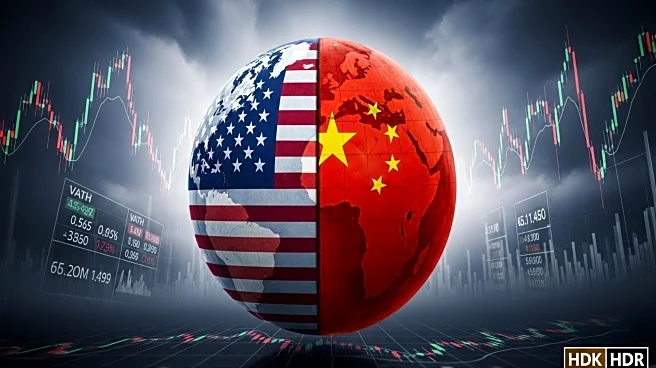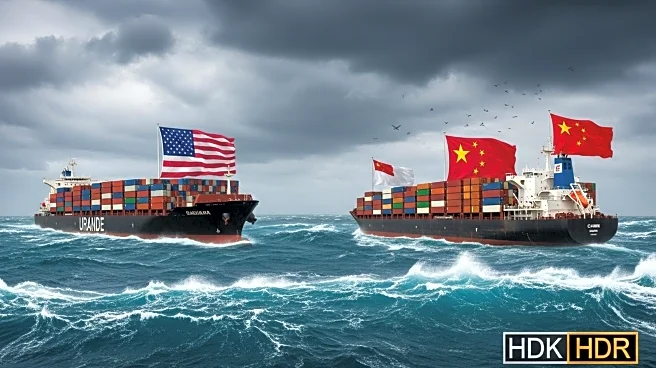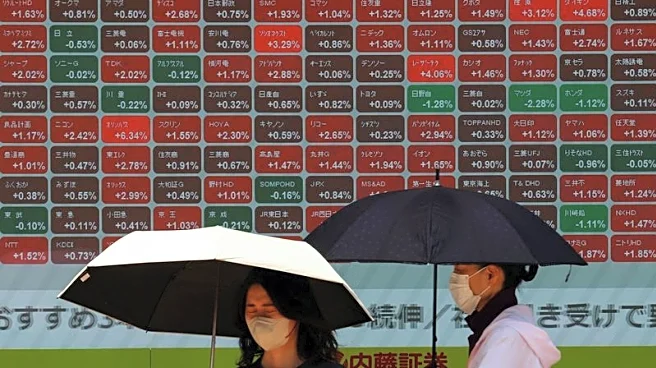What's Happening?
The trade tensions between the United States and China have escalated following President Trump's announcement of potential 100% duties on Chinese goods. This move comes in response to China's expanded
export controls on rare earths, which are critical components in various industries. The Bank of Thailand's Deputy Governor, Piti Disyatat, expressed concerns over the impact of these tensions on Thailand's economic growth, highlighting the limited room for further interest rate cuts. The central bank forecasts growth at 2.2% this year and 1.6% in 2026, below the potential growth rate of 2.7%. Despite negative inflation and a strengthening baht, the central bank has opted to maintain the key interest rate steady, focusing instead on financial measures and fiscal policies to support the economy.
Why It's Important?
The escalation in trade tensions between the U.S. and China poses significant risks to global economic stability, particularly affecting countries like Thailand that are heavily reliant on trade with both nations. The potential imposition of 100% duties on Chinese goods by the U.S. could disrupt supply chains and increase costs for manufacturers worldwide. This situation underscores the interconnectedness of global economies and the potential ripple effects of trade policies. For Thailand, the economic outlook is further complicated by domestic challenges such as negative inflation and currency fluctuations, necessitating strategic fiscal and financial interventions to mitigate adverse impacts.
What's Next?
The ongoing trade tensions may lead to further retaliatory measures from China, potentially exacerbating the situation. Stakeholders, including international businesses and governments, will likely monitor developments closely, seeking diplomatic solutions to prevent further economic disruptions. Thailand's central bank may continue to explore financial measures to support affected sectors, while other countries may reassess their trade strategies in light of these developments. The situation remains fluid, with potential implications for global trade dynamics and economic policies.
Beyond the Headlines
The trade conflict between the U.S. and China highlights broader geopolitical tensions and the strategic importance of rare earths in modern manufacturing. As countries navigate these challenges, there may be increased efforts to diversify supply chains and reduce dependency on specific nations for critical resources. This could lead to long-term shifts in global trade patterns and investment in alternative technologies or sources.
